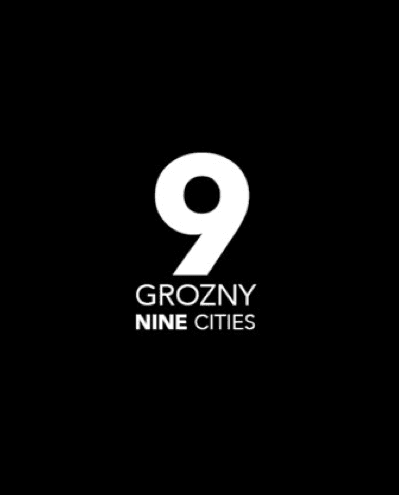“Grozny: Nine Cities”
A joint project by Olga Kravets, Maria Morina, and Oksana Yushko
Exhibition curator: Anna Shpakova
A project exploring specific aspects of Grozny’s aftermath through considering them as “cities” hidden within Grozny.
“Take a walk down Putin Prospect, Grozny’s main street, with shining marble facades, look carefully at long limbed Muslim women filing out of beauty salons, men riding brand new SUV, and you would never believe that this place was leveled by Russian aerial and artillery assaults less than a decade ago. Pause. Wait to celebrate peace, the reinvented life: inside, behind the freshly painted, pale pink walls, hate and despair still perform their sad dance. The ruined hopes and dreams – Chechnya’s wounds stay open like the deep puddles reflecting high sky outside the enormous central mosque. No fancy, newly opened sushi bars, no propaganda posters portraying Chechen President Ramzan Kadyrov, on every other building, can hide Grozny’s loneliness.
Layer by layer, the ‘Grozny: Nine Cities’ documentary project peels the veil off for you to uncover what is really going on in the complex life of the Chechen capital. Inspired by Thornton Wilder’s novel “Theophilus North,” the authors display various hidden and yet core aspects of human lives in post- war Grozny, the city built on top of the mass graves after two bloody wars. The project’s nine themes (or nine cities) devoted to the nation that for centuries tried to break free from Moscow’s control, penetrate the unstoppable efforts that Chechens undertake in search of their own way to happiness.
The City of Memory visual chapter reflects the unfading history of nearly 300,000 human lives destroyed by the two recent wars. Moscow vowed to win over Chechen civilians by rebuilding their devastated society, but seemed mainly interested in its loyalty to the Kremlin and the City of Production, Chechnya’s oil.
The City of War shows Grozny, which translates as fearsome, has never stopped breathing wars, the violence finding new targets. With Russian tanks gone off its streets, Russian nationals are isolated into the City of Strangers. Chechen suicide bombers attacking Chechen public places, Chechen police detaining Chechen civilians for being involved with radical Islamic underground tear apart the City of War.
Dealing with violence, as with rain and snow, the city tries on its Sufi identity – new mosques, new Sharia laws emerge in ever block of the City of Religion, its streets being renamed after Suffi Sheiks. Uncovered women’s heads, even on street advertisements, must be shameful for Chechen men, as local television appeals to the City of Men. Men proud of their black BMWs, assault rifles and pointy, black shoes ban the appearance of unveiled women in public places. The City of Women, as a symphony devoted to beauty features the most attractive face of Grozny.
With more authority wired from Moscow, Chechen President Ramzan Kadyrov, a former rebel fighter famous for silencing whistle blowers, creates the City of Servants with overwhelming armies of his fans, stadiums full of people chanting his name and Ramzan News TV chronicles covering his daily routine. The idolizing of one leader has never been a traditional concept for Chechen society. Historically, many Chechen clans constructed stone towers on their own land, a symbol of stable defense and self-confidence. In today’s City of Normality people exhausted by over 15 year of vile fighting and self-destruction cover floors in their new brick homes with thick, bright colored carpets, throw feasts and dance their feet off at crowded weddings in their most beautiful clothes, grabbing the chance to enjoy the happy moments before more troubles roll into their fearsome city.”
Text by Anna Nemtsova
‘Grozny: Nice Cities’ Exhibition is a WARM / Bayeux-Calvados Award for War Correspondents co-production.

